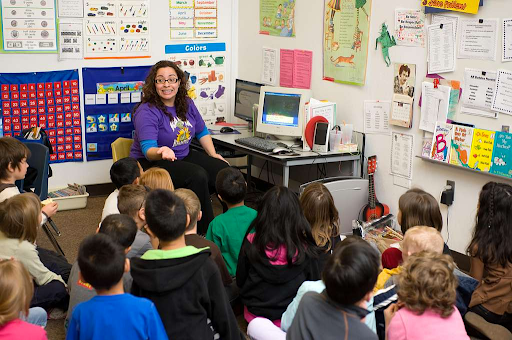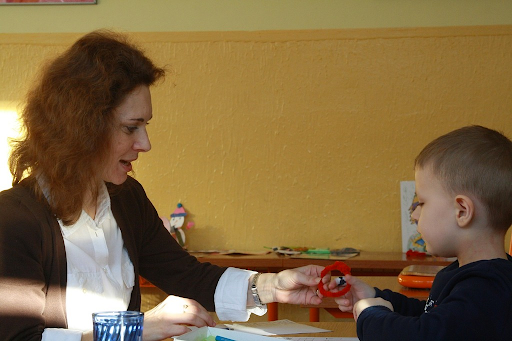Research related to early reading success is most effective when the findings reach the educators and administrators who stand to benefit from implementing them in the classroom.
Through exploration of translational science, researchers have examined the many layers that exist between research and classroom teachers.
These layers encompass policies, politics, governing bodies, education leaders in districts and states, higher education institutes, and publishing companies. They influence decisions related to curriculum and professional development at the leadership level.
The existence of all these layers can impede the successful communication and adoption of research in classrooms.
But worry not, the gap between research and practice, and consequently, the achievement of early literacy success through practical application, can be bridged.
By addressing the three crucial factors outlined in this article, any school district, governing body, or elementary literacy team can enact policies or implement measures to successfully translate the latest research into actionable practices.
1. Stay Up To Par with Current Research: Leverage New Tools/Resources or Adapt Existing Ones

If your school lacks a comprehensive standard or curriculum that covers all the research-based foundational reading skills, consider exploring supplemental tools that offer structured lessons and engaging activities/resources.
These resources play a crucial role in ensuring students receive essential lessons and participate in activities that enhance their understanding of key concepts.
While over half of elementary school teacher preparatory programs now have evidence-based components in them, this was not always the case.
In instances where elementary school teacher preparatory programs may have lacked evidence-based components, educators might be accustomed to certain teaching methods.
If educators are not receiving training in structured literacy within their current school environment, how can they acquire this knowledge while fulfilling their teaching responsibilities?
Are there accessible teaching resources with integrated professional learning components?
Alternatively, can support from specialists, such as literacy coaches, increasingly employed by many schools, fill this knowledge gap for educators?
These are legitimate questions that have to be answered if any education system is serious about bringing science-backed and proven early literacy research into schools.
Gathering the right support for teachers is one of the quickest ways to help them translate research into effective practice for early literacy success. That’s why it tops the list of three crucial factors.
2. Integrate the Science of Reading with The Science of Teaching Reading

There is a need for identifying strategies to align classroom practices with current knowledge on literacy development and instruction. Achieving this goal hinges on gaining a clear understanding of classroom teaching practices.
It needs to be understood how reading is taught in primary grades.
Is there resistance among teachers toward broad educational changes? One key point of contention in the discourse on word reading development is the appearance of total disregard of the language acquisition model.
If such perceptions exist, they must be dispelled promptly. Evidence-based early literacy has consistently highlighted the crucial need for decoding skills, such as phonics and phonological awareness, and also skills such as oral language and comprehension.
All these knowledge areas, and more that have not been mentioned, collectively constitute the foundational reading skills essential for evidence-based instruction and assessment tools.
Language can be universally and naturally acquired without explicit instruction, thriving in enriched linguistic environments. Whole language approaches leverage the innate development of language skills, arguing that children can deduce meaning from print.
Yet, studies indicate that word reading is distinct from the natural act of language learning and acquisition. Unlike oral language comprehension, reading is not universally inherent across cultures, languages, or individuals.
Thus, it can be asserted that oral language comprehension is natural, while word reading necessitates explicit instruction.
Thus, it can be understood how educator knowledge, beliefs and perception about their teaching philosophies matter a great deal. Because it is ultimately them who will have to formulate the right teaching strategy and tactics, in line with the research, and with help from others.
They must teach and progressively monitor the foundational reading skills explicitly. Additionally, they need to create routines and classrooms with appropriate activities and learning environments.
It’s a big ask. Thus, recognizing the importance of the science of teaching reading alongside the science of reading, is paramount.
Teachers require support through professional development which not only imparts new concepts but also provides practical, teacher-centric advice on applying these concepts in the classroom.
3. Adopt a Holistic Approach That Makes An Effort to Know the Full Context of Every Student

What if teachers, equipped with added support and enriched resources due to school initiatives, align their teaching with the latest research on early literacy success?
What if there’s a concerted focus not only on the science of reading but also on the science of teaching reading, incorporating the best aspects of their existing practices and extensive teaching experience?
Fulfilling the above criteria would result in a successful realization of the first two crucial factors discussed in the preceding sections.
Even with the fulfillment of the two mentioned criteria, the early learner’s perspective in bridging the gap between research and early literacy success remains unaddressed.
While school resources and personnel have been acknowledged, the ultimate beneficiaries of the education system, the students, have yet to be discussed.
They indirectly benefit from evidence-based teaching practices like explicit and differentiated instruction, which tailor lessons to their individual competency. But understanding their full backstory and current learning circumstance is also crucial for an effective early literacy approach.
What does understanding a student’s full circumstances entail?It involves gaining insights into their interests, strengths, and learning experiences beyond the classroom, encompassing their home and community environments.
Understanding all these different areas to get a complete picture is holistic learning. When combined with evidence-based learning, it is a powerful deciding factor for early literacy success.
Bridge The Gap Between Research and Early Literacy Success
We stand at a crucial juncture, armed with compelling evidence supporting specific teaching content and practices, which is finally being implemented at large in schools throughout North America.
Therefore, in this very important era of widely translating research into early literacy success, it is strongly encouraged to bear in mind the three factors highlighted in this article.
Using enrichment/supplementary tools +combining research with the art of teaching + learning as much as we can about the student= Abridgment of Gap between Research and Early Literacy Success.

